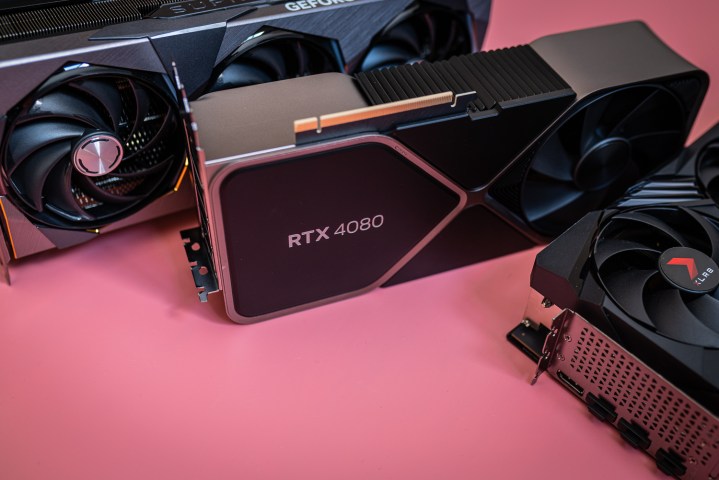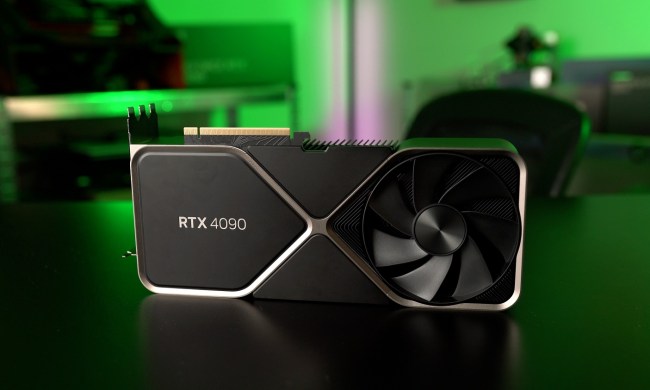
Nvidia may be readying three new GPUs — the RTX 4080 Super, RTX 4070 Ti Super, and the RTX 4070 Super. We haven’t seen Super cards since Nvidia’s RTX 20-series, but if this leak turns out to be true, they’re coming back. Will they be worthwhile enough to rank high among the best graphics cards? It’s hard to say, but they could help it compete against AMD’s recent GPUs.
The information comes from hongxing2020, a frequent leaker in the GPU space. Nvidia already has a decent spread of GPUs between the RTX 4080, RTX 4070 Ti, and the RTX 4070. However, if a refresh to the Ada lineup is reportedly on the way, we might see some notable changes, but only if Nvidia decides to shake things up and use a different chip for at least two out of those three GPUs.
The existing RTX 4080 almost utilizes the entire AD103 GPU, but not quite. It only uses 76 out of 80 streaming multiprocessors (SM). Is there room for an upgrade to the Super model? Maybe, and we’ve already heard rumors that such a graphics card is on the way. The thing is that adding four extra SMs barely makes for an upgrade, so unless the card was priced as low as the RTX 4080 currently sells for ($1,050-$1,150), it’d pretty much be dead on arrival. No one is going to pay $1,200 or more for a 5% upgrade when the RTX 4090 is an option.
One way to make the RTX 4080 Super a more attractive option would be for Nvidia to switch to the AD102 silicon. Even the RTX 4090 doesn’t max that one out, using 128 SMs out of 144, so there’s a lot of room for a decent performance boost that bridges the vast gap between the 4080 and the 4090. That chip also has a wider 384-bit memory bus, allowing for more VRAM and bandwidth.
The so-called RTX 4070 Ti Super strays from Nvidia’s usual naming conventions, so if it’s real, it’s going to be a mouthful. In any case, the RTX 4070 Ti already utilizes the full AD104 GPU, so any upgrades will have to mean a move to AD103 (which the RTX 4080 uses). Right now, the 4070 Ti has a 192-bit bus and 60 SMs, so Nvidia has a little wiggle room there between 60 and 76 SMs, not to mention the 256-bit bus on the AD103.
10.18 update
【super】I'm back
4080 super
4070ti super
4070 superdate TBD
…— hongxing2020 (@hongxing2020) October 18, 2023
The RTX 4070 Super could stick to its existing AD104 chip and utilize more of it, but that’s perhaps the GPU that makes the least sense here, so it’d have to be priced correctly to make an impact. Between the 60 SMs on the 4070 Ti and 46 SMs on the 4070, the increase would be visible, but if it’s too close in price to the 4070 Ti, everyone will choose that GPU instead.
After AMD launched the RX 7800 XT and RX 7700 XT, Nvidia’s competition at the upper midrange grew a lot more threatening. The 7800 XT makes an excellent alternative to Nvidia’s RTX 4070, all the while being $100 cheaper. Then there are the RX 7900 XTX and the RX 7900 XT, which cannot compete against Nvidia’s best, but are solid options if you don’t want the terrible value RTX 4080. Filling out the lineup with three new cards could certainly help Nvidia now, but only if those GPUs are better value than their non-Super counterparts.




